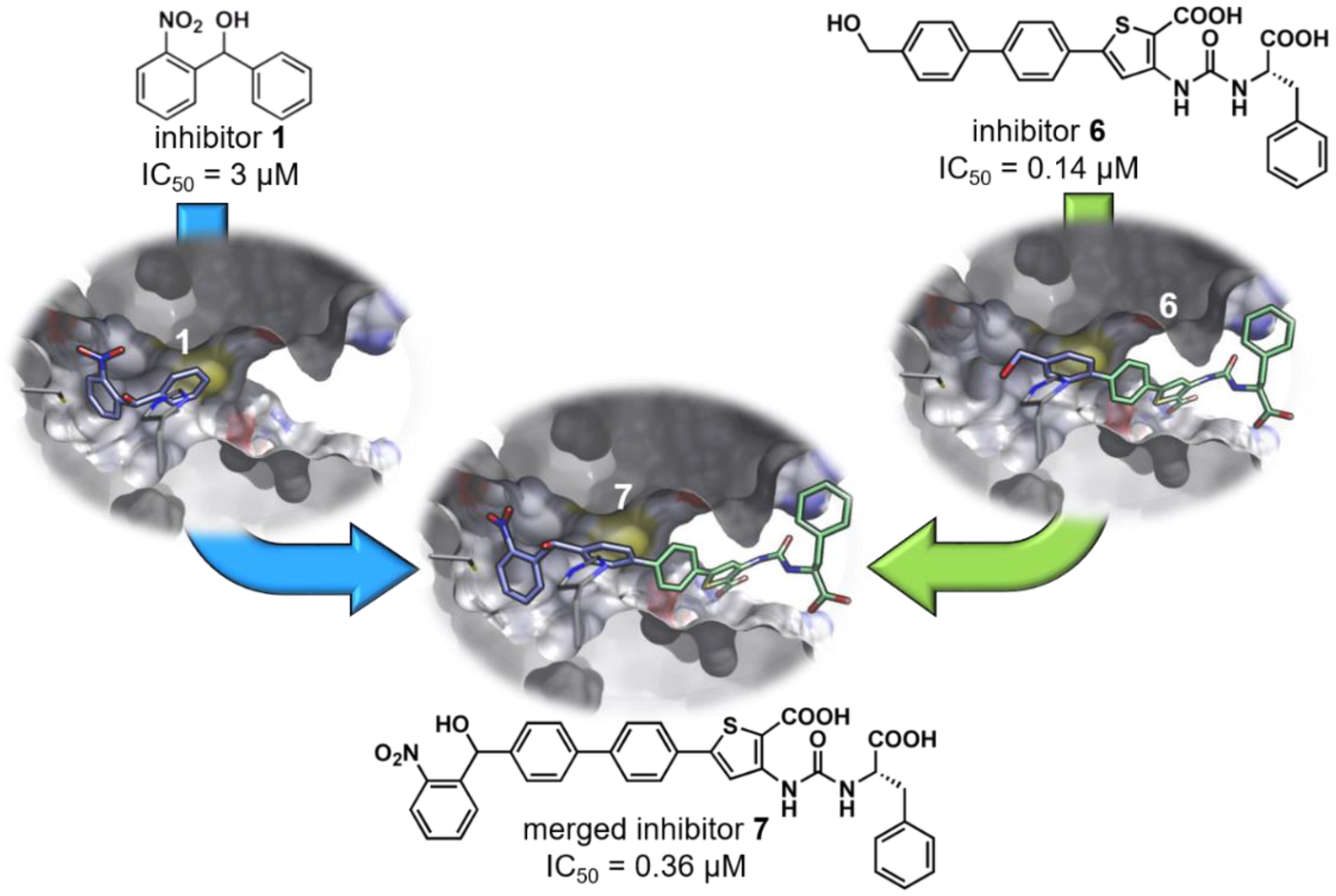In a fragment-based drug discovery (FBDD) project, fragment-based screening (FBS) approaches are exploited to identify low molecular weight fragments that bind to the target biomolecule. These fragments are typically low in activity and therefore need to be optimized to improve their biological activity and drug-like properties to make them lead compounds. Creative Biostructure provides fragment-to-lead solutions for global customers with drug discovery needs. Through structure-based design, we can optimize the fragment hits into higher affinity compounds which can be utilized as a starting point for drug discovery.
 Figure 1. An example of a compound merging attempt. (Kirsch P.; et al. 2019)
Figure 1. An example of a compound merging attempt. (Kirsch P.; et al. 2019)
According to the interaction information provided by NMR, X-ray, and other biophysical methods and combined with the structural characteristics of the target itself, the fragment molecules are processed to turn them into molecules with larger and more complex structures, producing other interactions at the active site of the target protein and enhancing the binding affinity with the target.
When two non-competitive fragments that bind in two different sites on the target protein (the two binding sites are close enough in space), the two fragment molecules can be linked by a suitable chemical linker or spacer. Because each fragment can bind to the receptor, when the fragments are linked, the additive effect can be exerted, producing lead compounds with higher activity.
This strategy can be utilized in cases when the two binding sites have regions in common or where two different fragments partially occupy the same region and thus the fragments are partially competitive with respect to the binding site. In this case, the overlapping parts form a nucleus, and different parts come together. The two fragments are merging in an appropriate way to form a more active molecule.
Creative Biostructure is a reliable drug discovery CRO, and we can not only provide high-quality solutions for fragment-to-lead but also support upstream fragment-based screening and further in vitro/in vivo lead optimization services. In addition, you can exploit our FBDD platform to carry out integrated drug discovery programs.
References

Easy access to products and services you need from our library via powerful searching tools